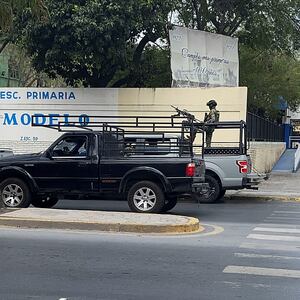Last weekend, four Americans were ambushed and shot at by gunmen after they drove a minivan across the border into Northeastern Mexico. Two of the Americans were killed during the shootings, while the other two were kidnapped for days until law enforcement were able to locate and rescue the victims from a house in the rural area of Tamaulipas.
Later reports suggested the group were victims of mistaken identity—and were erroneously targeted by the gunmen who mistook them for other people.
However, the Americans were also victims of the dark side of medical tourism—the practice of traveling abroad in order to receive medical treatments that they might not otherwise be able to obtain in the U.S. due to financial or regulatory constraints.
ADVERTISEMENT
“Border cities tend to be inherently dangerous places, but that is where many medical centers that attract Americans happen to be located,” Adam Wellstead, a professor of public policy and social sciences at Michigan Tech University, told The Daily Beast. “[Many] people flock to Mexico for medical care.”
It’s important to stress at the outset that the four who were attacked were undoubtedly victims. Two of them had their lives taken while the lives of the other two have been changed forever by this tragedy. However, the situation underscores some of the inherent dangers that come with the practice of medical tourism and traveling into foreign countries in order to receive medical care.
Patients Beyond Borders, a medical travel advocacy group based in North Carolina, estimates that roughly 800,000 to 1 million Americans travel abroad each year in order to receive some form of treatment. While medical tourists will travel to far-flung countries like Singapore, India, Thailand, and Malaysia to receive care, they’re more than likely to stick to places closer to home like Mexico, Costa Rica, or even Cuba. That makes Mexican border cities like Matamoros (where the four Americans traveled to) or nearby Reynosa fertile ground for medical centers to service them.
But that’s where the risks begin—at least for the four Americans who traveled to Tamaulipas. The U.S. State Department has issued a “Do Not Travel” advisory on the state of Tamaulipas “due to crime and kidnapping” by organized criminal groups—the exact place where the four Americans traveled to for the tummy tuck procedure.
Wellstead emphasized that the situation sounds like “an isolated incident” that may not necessarily reflect the risks that most Americans might face when traveling for medical procedures. But the U.S. Center for Disease Control and Prevention also warns that, like any other medical procedure, medical tourism also comes with risks such as complications from surgeries, and contracting pathogens such as hepatitis B and HIV.
The growing demand for medical services from Americans traveling abroad to places like Mexico also strains the “supply-side capacities” of these destination countries, Wellstead said. He added that not knowing the health policy environment of these countries might also result in additional “medical risks and safety concerns.”
Despite this, there has been little in the way of regulatory efforts when it comes to the practice. Wellstead co-authored a paper published in the journal Global Health in 2020 that looked at the policy environment when it comes to medical tourism. He argues that “policymakers have largely “failed to articulate a clear and comprehensive policy vision” when it comes to medical tourism regulation.
So medical tourism isn’t going to go away any time soon—especially as more and more Americans continue to reject the U.S. health care system due to its cripplingly expensive and generally exploitative nature. Overseas medical care offers “substantially lower costs with patients usually receiving the same quality of care as in the U.S.,” Wellstead said.
This makes places like Mexico or Thailand especially appealing to people who lack insurance but need dental or surgical work done. And even having insurance will not guarantee coverage for elective work like cosmetic surgery. A tummy tuck can cost upwards of $8,000 in the U.S. However, it can cost nearly half of that in a place like Tijauana or Bangkok. Abroad, low- to middle-income earners in the U.S. suddenly have access to procedures they are otherwise barred from.
It’s not just surgeries either. Americans are also willing to cross the border in order to purchase life-saving medicines like antibiotics and insulin at a fraction of what they would cost out-of-pocket in the U.S.—perhaps the most damning indictment of American health care and a more empathetic reason people engage with medical tourism.It’s more than just folks looking for cheap medicine or tummy tucks.
While policies could be enacted to discourage more Americans from practicing medical tourism, the easiest solution would perhaps be lower cost or even free health care. Instead, many feel their last resort is to dig out their passport, hop into a plane or car, and travel to a foreign country to find care at the risk of their own livelihoods.
That may seem like a wild approach, but for many Americans, these options are the difference between life or death.









